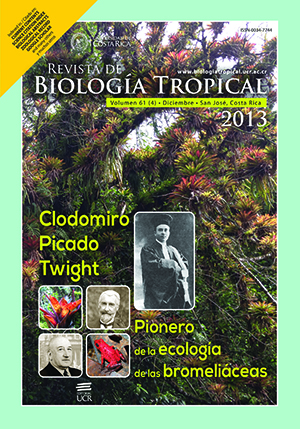Resumen
El Banco Hannibal se encuentra en Coiba que es Patrimonio de la Humanidad de UNESCO en el Pacífico de Panamá y es una importante zona de pesca. Este estudio evaluó las principales características topográficas y la complejidad de la montaña submarina Banco Hannibal mediante el uso de sensores remotos acústicos. A pesar del estado de protección de la zona y la importancia para las especies comerciales de peces como el pargo y el atún, la montaña submarina no ha tenido ningún estudio detallado salvo alguna colección de organismos. El área de estudio de alrededor de 125km2 identificada usando cartas de navegación fue definida usando datos de sonar de barrido lateral durante julio 2008. La información batimétrica fue importada a ArcGIS donde se creó un modelo digital batimétrico (DBM) y mapa de pendientes. La extensión del ArcGIS Benthic Terrain Modeler (BTM) se utilizó para calcular el índice de posición batimétrica o BPI (pendiente de cada celda relativa a las celdas vecinas) y rugosidad. El banco Hannibal es un guyot alargado, triangular (montaña submarina plana en parte superior), que se extiende en profundidad desde 53m hasta 416m, tiene una superficie de 76km2 y es de 14.4km de largo y 7.1km de ancho. El Banco Hannibal está compuesto por pendientes pronunciadas, pendientes más suaves, parte superior de la montaña submarina, crestas (altos relieves en la parte superior), zonas rugosas (en las crestas, parte superior de los montes submarinos y pendiente), barrancos y crestas. El banco es asimétrico, con una pendiente relativamente suave y con surcos a través de la superficie en el lado norte en comparación con el lado suroeste que es mucho más pronunciado y más rugoso. Hay dos cumbres al norte y al sureste de la orilla, que varían en profundidad de 180 a 333m. El sustrato rocoso comprende unos 22.6km2 del banco y sedimentos 37.8km2. El banco y sus caras abruptas, áreas rugosas y pináculos proporcionan estructuras verticales que pueden alterar y mejorar topográficamente las corrientes. Esto se cree produce un afloramiento local que explicaría las mayores agregaciones de peces que son el objetivo de la pesca comercial y deportiva. Es probable que el Banco Hannibal tenga una presión cada vez mayor en el futuro debido al cambio climático y la pesca y este estudio ha producido información valiosa que permite la clasificación de los hábitats para el manejo de las especies asociadas y su pesca, así como la iniciación de la investigación sobre montañas submarinas de Panamá.##plugins.facebook.comentarios##
Descargas
Los datos de descargas todavía no están disponibles.






